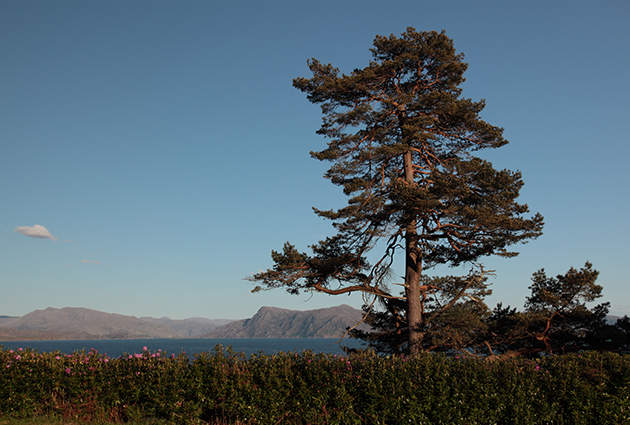How to plant trees
Planting trees means considering height, size, positioning and the shadows they will cast, not to mention the views they will hide or enhance

At Gravetye, we’re lucky to have a wealth of trees in the garden. The oldest were planted in the last quarter of the 19th century, when the successful gardening pundit and publisher William Robinson acquired and began remodelling the estate.
Managing trees well is all about long-term planning and ensuring an adequate supply of young specimens that will replace mature ones when they go. Each generation of gardeners has a responsibility to manage the tree programme for the next generation—if we plant some good, well-placed trees now, in 100 years’ time, when those Robinson planted have gone, Gravetye should still be full of beautiful trees.
Ancient pines make striking silhouettes throughout the landscape here, so it’s a priority to ensure we have adequate young stock to replace them. There are many beautiful pine species, but, in our situation, the common Scots pine, Pinus sylvestris, tends to look best. I love its orangey bark and the slight glaucous sheen to its needles.
We also have several exotic specimens to plant, including a handkerchief tree, Davidia spp. Some 20 years pass before a ‘new’ Davidia flowers, so not a moment can be lost in getting young saplings into the ground. Extra thought is needed before planting a tree that’s intended to be a major, long-term feature in the garden. Selecting the right species for a site is critical: you need to match it to the soil type, climate and situation, of course, but it must also have enough space to develop into a beautiful specimen.
Consideration must be given to how the tree will affect views through the garden when fully mature; although trees can be very effective at blocking ugly views, they can also be used to direct or frame beautiful ones. The shade a tree will eventually cast on the surrounding garden should also be kept in mind, as well as its proximity to buildings. As a general rule of thumb, it’s best not to plant a tree closer to a dwelling than 80% of its anticipated ultimate height.
Sourcing good-quality nursery stock is important. We place a lot of trust in the nursery grower to supply us with a healthy vigorous, correctly named tree and it’s always worth using a reputable one. Visiting the nursery to pick the tree yourself and talk to the grower is always time well spent—the healthiest, best-shaped specimen can be found and much can be learnt from the grower’s expertise.
Gravetye’s southern location means that planting can usually be carried out at any time in the dormant months, but we never work with very wet or frozen soil. Good soil preparation is important to give the tree its best possible chance. This is the only opportunity to cultivate and improve a piece of ground that won’t be touched for a very long time.
Sign up for the Country Life Newsletter
Exquisite houses, the beauty of Nature, and how to get the most from your life, straight to your inbox.
The most important thing is the size of hole, which should be the same depth as the tree’s root ball and at least three times its width. And do make the pit square-shaped—when it’s round, the roots can often spiral in circles around the hole’s edge, instead of stretching away. In a square pit, the roots are forced to reach beyond at the corners.
When the tree is planted, it must be at the correct height, with the soil reaching the original level it was at in the nursery. Then, the tree must be thoroughly firmed in as the hole is backfilled, by compressing the soil round the roots with one’s heel at regular intervals. This must be done firmly yet carefully, so that no roots are damaged. If the tree is staked, it must be checked regularly, so that its ties don’t start to damage the tree, and the stake removed altogether when it’s no longer needed.
Regular weed control and watering in the dry periods always help a tree’s establishment and, if it’s well looked after for the first years of its life, then it should thrive for the next century, demanding very little attention.
Tom is Head Gardener at Gravetye Manor in East Sussex

